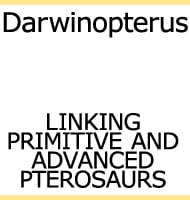Darwinopterus
In Depth Darwinopterus was a truly ground breaking discovery as it displays features of both the basal rhamphorhynchoid pterosaurs, and the later more advanced pterodactyloid pterosaurs. Before the discovery of Darwinopterus, there was a marked gap between these two groups, but now that the transitional form of Darwinopterus has been found it is considered to … Read more
